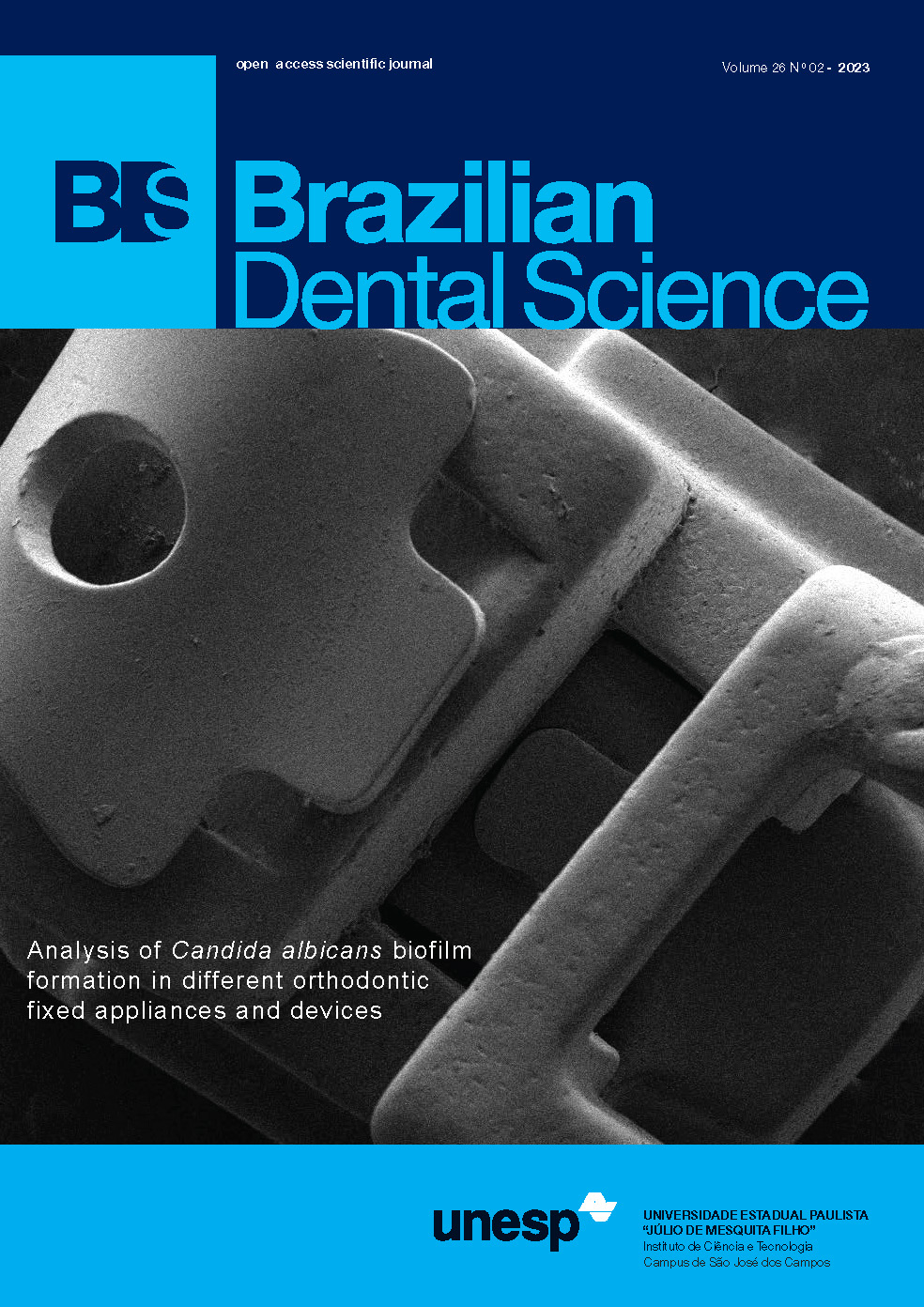Accuracy of selective laser sintered computer guided stents versus digital light processing stents in immediate implant placement in esthetic zone: a randomized controlled trial
DOI:
https://doi.org/10.4322/bds.2023.e3472Abstract
ABSTRACT
Objective: To compare accuracy of selective laser sintered computer guided stents versus digital light processing stents in immediate implant placement in esthetic zone. Material and Methods: The patients were selected according to the eligibility criterias. The selected patients were randomly allocated to either digital light processing stents (test group) or selective laser sintered computer guided stents (control group). Proper examination and diagnostic records were done for each patient followed by triple scan protocol with cone beam computer tomography (CBCT). Planning and construction of tooth supported computer guided surgical stent was done by either digital light processing technique for test group or selective laser sintering for control group. Twenty implants were inserted following computer guided implant placement protocol. After post-operative CBCT pre and post images were merged using blue sky bio software. Linear and angular deviations between planned implant and actual implant positions were measured. Results: Tests were considered statistically significant if the p- value was less than 0.05. Difference in means were calculated for the analysis of continuous variables with corresponding 95% confidence intervals. There was no statistical difference between selective laser sintering and digital light processing groups in all measured terms. Conclusion: Within the limitations of this study, both techniques can be used for immediate implant placement with clinically satisfactory results decreasing the positional errors associated with immediate implant placement.
KEYWORDS
Computer aided; Immediate dental implant; Stents; Surgery; Guided surgery.
Downloads
Published
How to Cite
Issue
Section
License
Brazilian Dental Science uses the Creative Commons (CC-BY 4.0) license, thus preserving the integrity of articles in an open access environment. The journal allows the author to retain publishing rights without restrictions.
=================




























